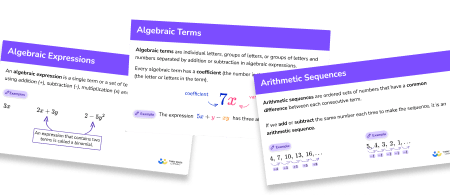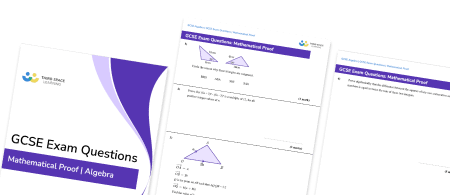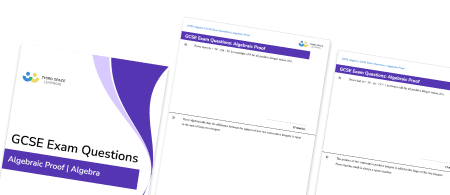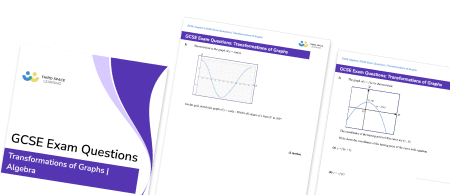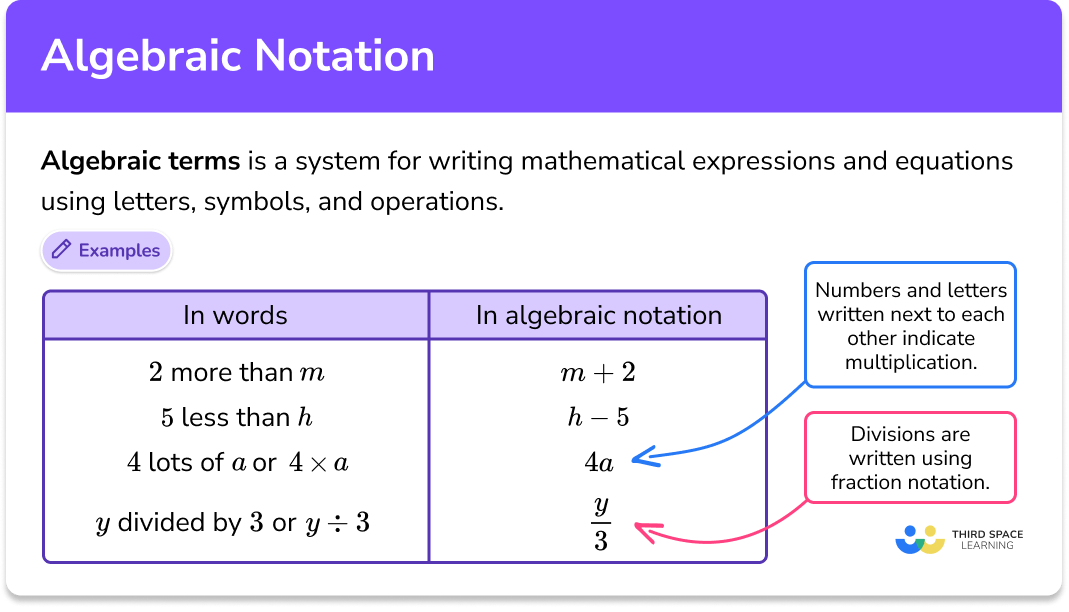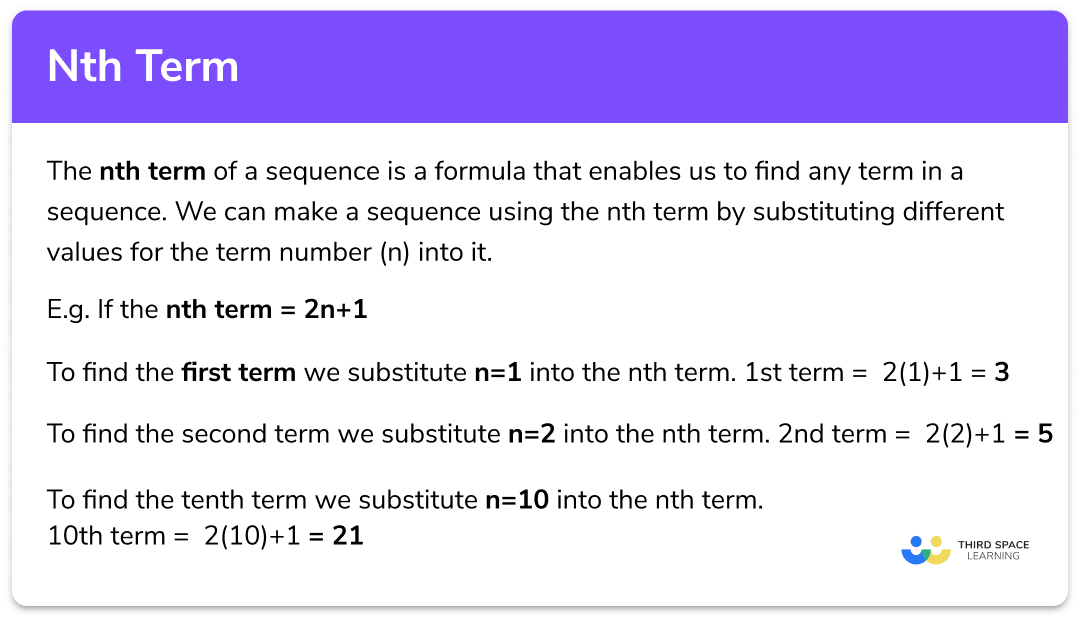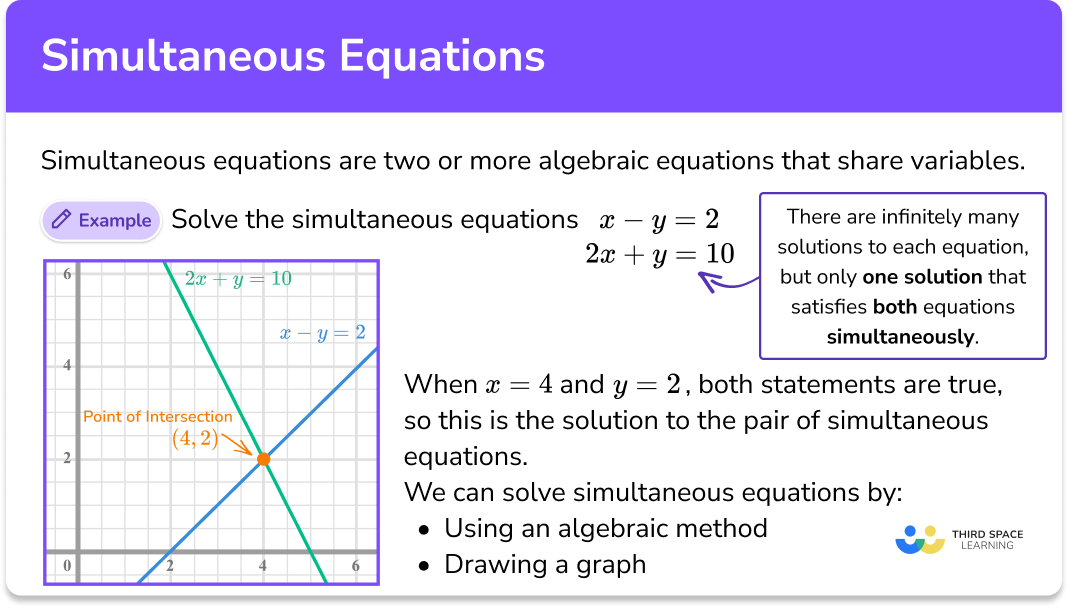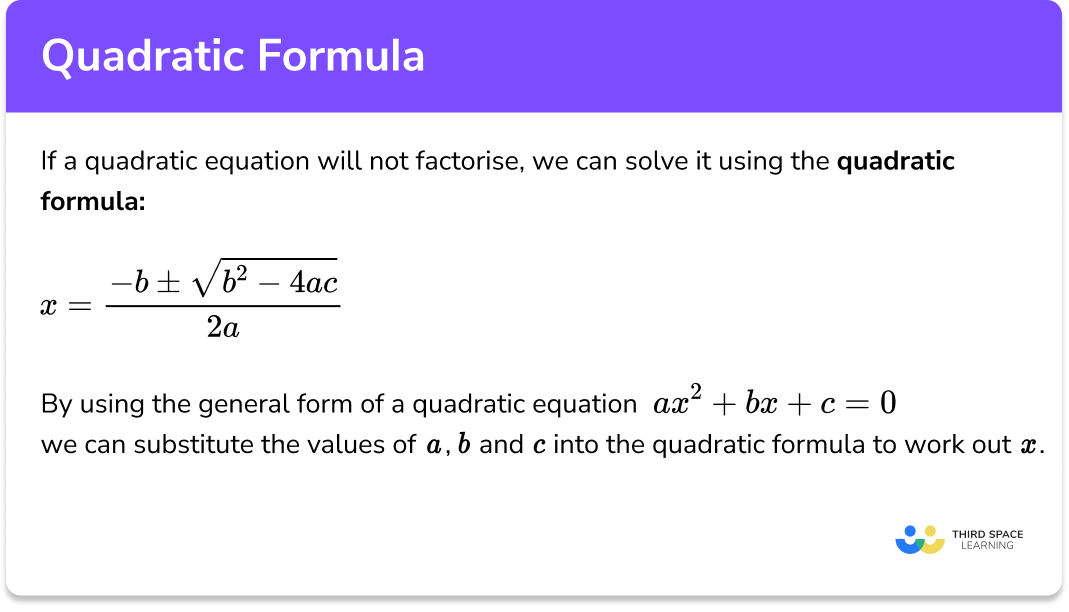FREE DOWNLOAD
Arithmetic Sequence Worksheet

Help your students prepare for their Maths GCSE with this free arithmetic sequence worksheet of 36 questions and answers
- Section 1 of the arithmetic sequence worksheet contains 27 skills-based arithmetic sequence questions, in 3 groups to support differentiation
- Section 2 contains 3 applied arithmetic sequence questions with a mix of worded problems and deeper problem solving questions
- Section 3 contains 6 foundation and higher level GCSE exam style questions
- Answers and a mark scheme for all questions are provided
- Questions follow variation theory with plenty of opportunities for students to work independently at their own level
- All questions created by fully qualified expert secondary maths teachers
- Suitable for GCSE maths revision for AQA, OCR and Edexcel exam boards
Arithmetic sequence at a glance
Arithmetic sequences are sequences of numbers which increase or decrease by the same amount each time. The numbers may be integers, fractions or decimals and have a common difference which is found by subtracting consecutive terms of an arithmetic sequence. The common difference can be used to find the next term in the sequence or another missing term. It is sometimes known as the term-to-term rule.
The common difference and the first term can be used to find the general term also known as the nth term of the sequence. The nth term allows us to find any term in the sequence by substituting the term number as the value of n, for example we can work out the 10th term by substituting 10 as the value of n.
The nth term can also be used to check if a number is a term in a sequence by setting the number equal to the nth term and solving the equation. If the solution to the linear equation has an integer solution then the term is in the sequence. If the solution is a decimal then the number is not in the sequence.
Looking forward, students can progress with more sequences worksheets to additional algebra worksheets, for example a collecting like terms worksheet or simultaneous equations worksheet.

For more teaching and learning support on Algebra our GCSE maths lessons provide step by step support for all GCSE maths concepts.
Do you have students who need additional support?

With Third Space Learning's secondary maths tutoring programmes, students in Year 7-11 receive regular one to one maths tutoring to address gaps, build confidence and boost progress.
"My confidence in the tutoring is high. We've had some phenomenal results. I even had one girl get a Grade 8 this year; she came to every tutoring session."
Stacey Atkins, Maths Director, Outwood Grange Academies Trust

